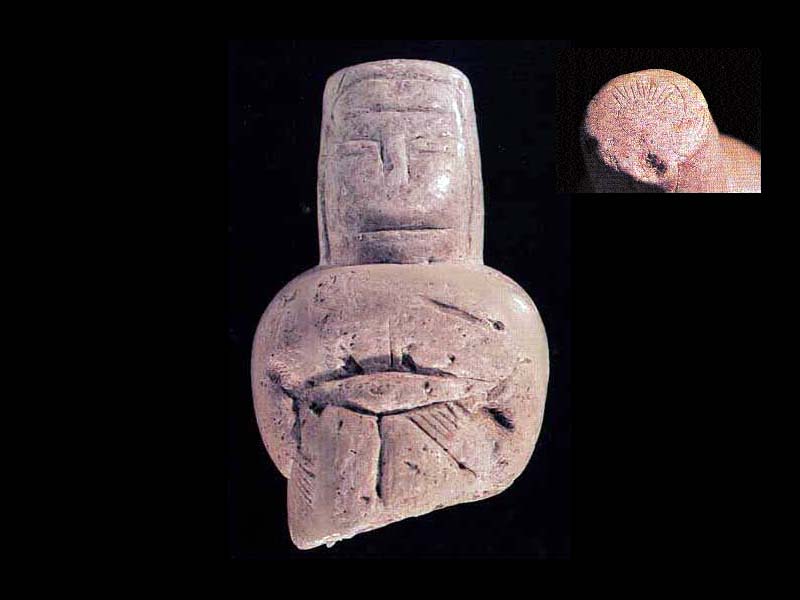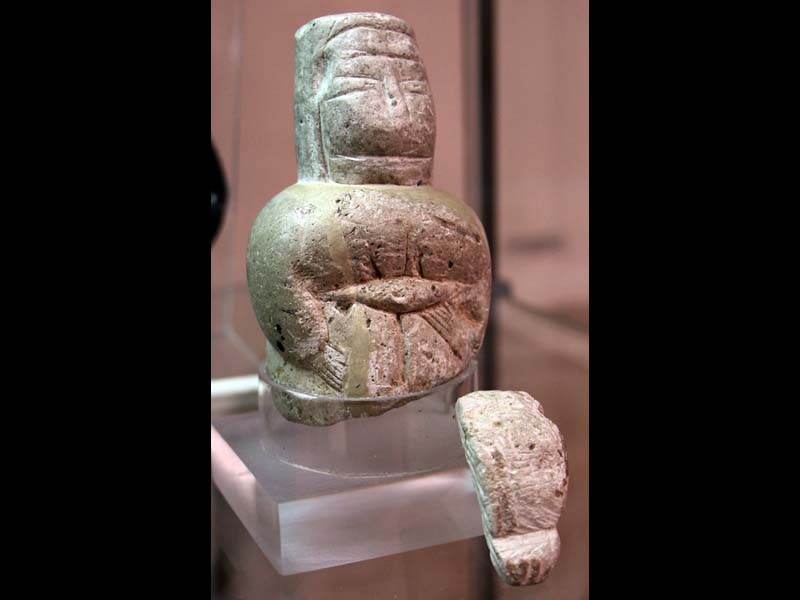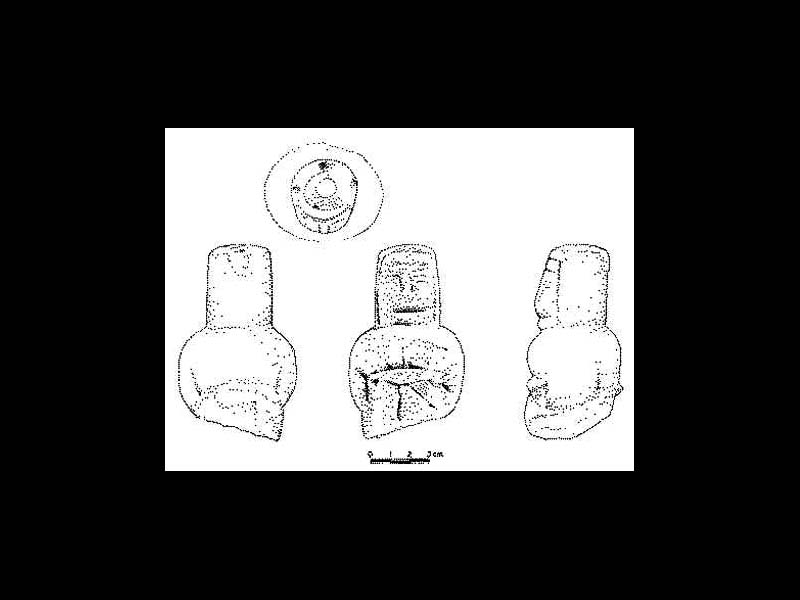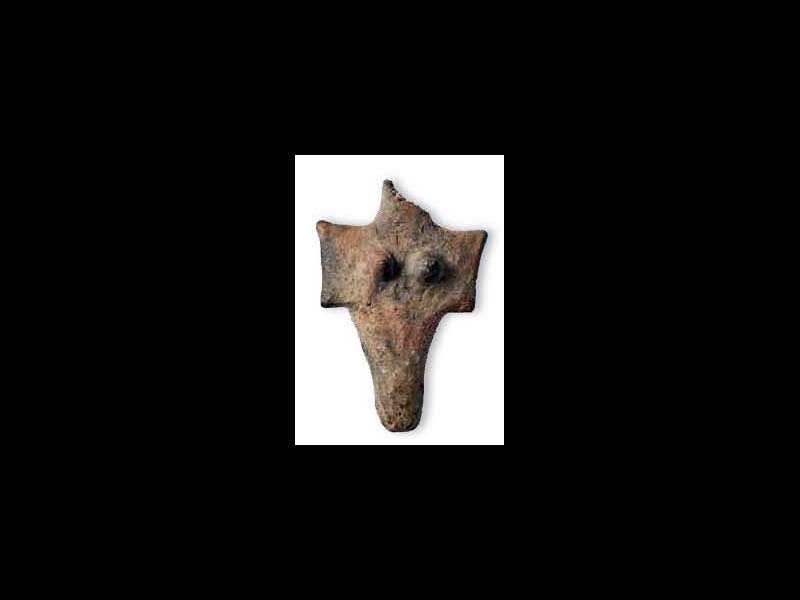At the "Su Monte" shelter, two statuettes were found which will be described in the file with the name of exhibit 1 e exhibit 2.
Il exhibit 1 of “Muros-Su Monte” is a fine example, albeit not intact, of a steatopygian statuette (belonging to the geometric-volumetric style) in ivory-coloured kaonilite.
The figurine is equipped with a large headdress a poles which, according to Lilliu (1999) represents “the sign of the divinity of the idol” and which would have presented itself as a “rich and luxurious fabric headdress.” This sign of power, also identified by the archaeologist himself as a "tiara", surmounts the figure, covering a slightly squared and elongated cylindrical head.
In the upper part you can see the engraving of two concentric circles, the first of which has oblique notches. On the forehead there is a protruding triangle with the vertex facing downwards.
The head then rests on the bust which widens, emphasizing a rounded shape in which the arms and hands are adherent to the body; the left hand converges towards the belly while the right descends on the side. The hands have been sculpted with a "comb" shape that rigidly defines the fingers.
The face has eyes engraved through two parallel horizontal lines with a central dot indicating the pupil, the nose is hinted at, in a style defined as a "T-face". A long horizontal cut at the level of the throat depicts the mouth. The slightly protuberant chest overhangs the prominent "v-shaped" belly. Due to a fracture, the statuette appears to be apode or missing the lower part.
Lilliu (1999) on an iconographic level makes a comparison between the statuette 1 of Su Monte and the limestone statuettes of Malta (temple of Hagiar Kim) and those of the hypogeum of Hal-Saflieni (XNUMXth millennium BC).
Il exhibit 2, of more recent times, is in clay, headless and of planar style with a whole plate (cruciform). The breasts and buttocks are clearly delineated, with a smooth surface and uneven colour. The planar style of the recent Neolithic reflects the evolutionary process of female anthropomorphic representations that pass from a corpulent figure to a more slender image in which, however, the breasts stand out which in the previous typology are sketchy. Gimbutas (2005) defines this typology with the term "the rigid white goddess", usually carved in white stone (marble, alabaster or other) and which symbolizes the cycle of life and regeneration.
Marginal note Exhibit 1: Iconographically and symbolically, hands on the belly are a clear indicator of fertility cults (see, among others, Gimbutas 2005, 2008). Furthermore, I would like to point out an element that is not highlighted by the archaeological literature: the stylistic and iconographic rendering of the right hand has similarities with the so-called "Venus of Laussel", a female figure carved into the rock and covered in red ocher, dating back to the Paleolithic (ca. 20.000 BC) thousands of years before the statuette under consideration. Given the chronological and geographical distance, a comparison is certainly not possible but I believe that the element is worthy of note and worthy of further study.




Historical notes
The figurines were found under a rock shelter.
CARD
LATEST PUBLISHED TEXTS
VISIT THE FACTSHEETS BY OBJECT

